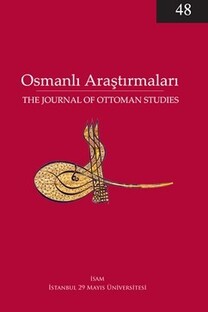Kātip Çelebi’s maps and the visualization of space in Ottoman culture
Büyük Osmanlı aydını ve coğrafyacısı Kâtip Çelebi (1609-57) sık sık bir haritacı olarak anılsa da, bu makale, onun kendi elyzasısıyla yazılmış eserlerinde bulunan ve Avrupa haritalarının kopyaları olarak tanımlanamayacak haritalara eleştirel bir gözle bakıyor. Kâtip Çelebi’nin harita çizmek için matematiksel bir metodu olmadığını, sabit bir gözlemciye dayanan Batlamyus’un bir kuşbakışı perspektifinden ziyade, mekan içinde hareketi esas alan ve yol ya da şebeke haritalarından müteşekkil bir ağ yaratarak mekanı temsil eden bir tür zihni haritacılığı sıklıkla yeniden ürettiğini ileri sürüyorum.
Kâtip Çelebi’nin haritaları ve Osmanlı Kültürü’nde mekanın görselleştirilmesi
While Kâtip Çelebi, the great Ottoman intellectual and geographer (1609- 57), is also often celebrated as a cartographer, this article critically assesses the maps found in his autographs, excluding those that can be identified as copies of European maps. I argue that Kâtip Çelebi did not have a mathematical method to draw maps, and often resorted to reproducing a type of mental mapping which represents space not in a Ptolemaic ‘bird’s eye’ perspective centered on a fixed observer, but based on the assumption of a movement through space, creating a web of road- or network maps.
- ISSN: 0255-0636
- Yayın Aralığı: Yılda 3 Sayı
- Başlangıç: 1980
- Yayıncı: TDV İslâm Araştırmaları Merkezi
Sayıdaki Diğer Makaleler
Arabes et Turcs au Maghreb dans les années 1513-1520 d’après les Ġazavât-ı Ĥayrü-d-dîn Paşa
İdeal Bir Benlik Yaratmak: Geç Dönem Ortaçağda Anadolu Uç Anlatılarında Kafir Temsilleri
L’Afrique dans la cosmographie de Kâtib Çelebi
XVI. Yüzyıl Osmanlı Seyahatnameleri Hakkında Bir Değerlendirme
Palmira BRUMMETT, Katherine NEWELL THOMPSON
Others and Other Geographies in the Şehnāme-i Sel m Ĥān
The World of Mehmed Murad: Writing Histoires Universelles in Ottoman Turkish
